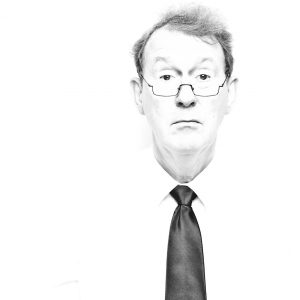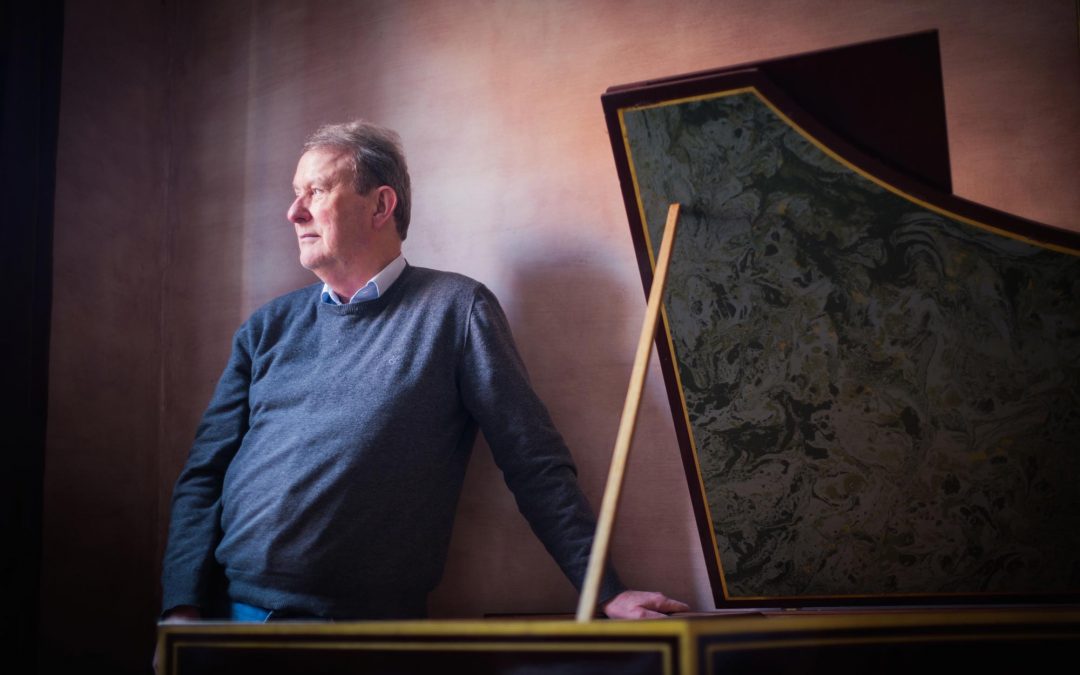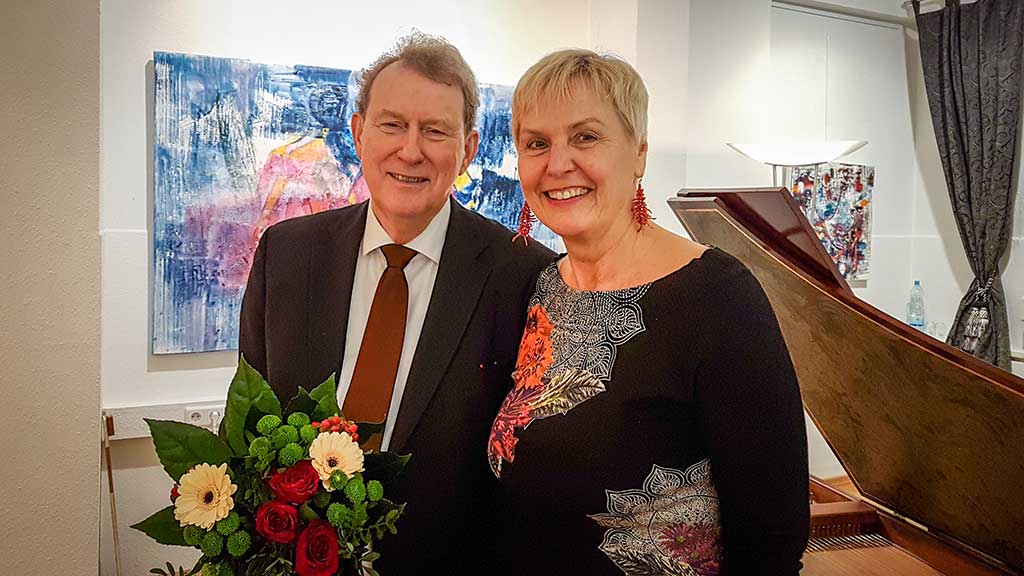Photo: Yuko Inoue
Dear friends of old music,
On Saturday, February 2, 2019, the concert was given by Ketil Haugsand, who performed the Goldberg Variations by Johann Sebastian Bach on his 2-manual harpsichord by Martin Skowronek.
On this occasion, many interested people came in, eagerly listening to the play of the master. The variations begin with an aria, followed by a total of 30 variations, each subdivided into triplets and always completed with a canon. From group to group, the interval of the canons increases steadily (unisono, seconda, etc.). The first two variations of a group in between, however, are hardly based on the aria, but rather on its 32-bar bass line. In addition, there are many other features that would be beyond the scope of this essay.
Ketil Haugsand played the variations technically most impressive and musically beautiful and since they were played without pause, the listener was like in a trance until the very end, listening to the music.
Bach wrote the Variations in 1740 and it is said that he dedicated this to his friend Hermann Carl von Keyserlingk, who asked for a piece for his harpsichordist Johann Gottlieb Goldberg, to sweeten his sleepless nights. Whether this anecdote is true is not proven. Goldberg was just 14 years old at the time of publication and technically most likely was barely able to adequately present this technically highly sophisticated work.
But whether the story is true or not is ultimately not that important to us listeners. Important to the listener were the sounds, which justified the demand of Count Keyserlingk, who were “so gentle and somewhat merry in character, that in this way he could be a little cheered up in his sleepless nights.” And this was true indeed!
The evening, however, ended not yet with the fading of the last note: After the concert Ketil Haugsand lectured on the harpsichord and explained to the visitors, which special features of this instrument are inherent. It is important, for example, on which kind of harpsichord a piece is played, because the type varies from country to country. It is not just aptitude to play a German piece like the variations on a German harpsichord. It goes without saying that each composer preferred to use the local instruments in his time, and so the compositions are also directed by the sound possibilities that these instruments brought with them. Therefore, it sounds terrible to play a French work on a German instrument, for example, or vice versa.
Also, the audience was allowed to try out what it’s like to play on a harpsichord. Under the supervision of Mr. Haugsand, one or the other tried to find out how smoothly the keys are to be pressed. Added to this are the different registers that this instrument offers, allowing the musician an astonishingly comprehensive sound design.
A very musical and interesting evening!
Dear friends of music,
This weekend again Ketil Haugsand is visiting the music studio! About a year ago we already had the great pleasure of his wonderful play with pieces by L. Marchand, J.-P. Rameau, J.-B. A. Forqueray and J. S. Bach. This time, however, the emeritus professor for harpsichord focuses exclusively on Johann Sebastian Bach and one of his most important works: the Goldberg-Variations of 1741. Bach described it as a piano practice in an ARIA with various changes to the clavicimbal with 2 manuals.
So do not miss this great concert!
Saturday, 2nd of February 2019
17 Uhr
Blücherstraße 14
53115 Bonn
PROGRAM:
Johann Sebastian Bach (1685 – 1750)
Goldberg-Variations, BWV 988
– Aria
– Variatio 1. a 1 Clav.
– Variatio 2. a 1. Clav.
– Variatio 3. Canone all Unisuono à 1 Clav.
– Variatio 4. à 1 Clav.
– Variatio 5. a 1 ô vero 2 Clav.
– Variatio 6. Canone alla Seconda a 1 Clav.
– Variatio 7. à 1. ô vero 2 Clav. (al tempo di Giga)
– Variatio 8. a 2 Clav.
– Variatio 9. Canone alla Terza. a 1 Clav.
– Variatio 10. Fugetta. a 1 Clav.
– Variatio 11. a 2 Clav.
– Variatio 12. Canone alla Quarta.
– Variatio 13. a 2 Clav.
– Variatio 14. a 2 Clav.
– Variatio 15. andante. Canone alla Quinta. a 1 Clav.
PAUSE
Johann Sebastian Bach (1685 – 1750)
Goldberg-Variations, BWV 988
– Variatio 16. a 1 Clav. Ouverture
– Variatio 17. a 2 Clav.
– Variatio 18. Canone alla Sexta. a 1 Clav.
– Variatio 19. à 1 Clav.
– Variatio 20. a 2 Clav.
– Variatio 21. Canone alla Settima.
– Variatio 22. a 1 Clav. alla breve
– Variatio 23. a 2 Clav.
– Variatio 24. Canone all Ottava a 1 Clav.
– Variatio 25. a 2 Clav. („adagio“)
– Variatio 26. a 2 Clav.
– Variatio 27. Canone alla Nona. a 2 Clav.
– Variatio 28. a 2 Clav.
– Variatio 29. a 1 o vero 2 Clav.
– Variatio 30. a 1 Clav. Quodlibet.
– Aria da Capo è Fine
Cembalo by Martin Skowroneck, Bremen, 1985 – after German models around 1720
Entry: 18,- € / 10,- € red.
Ketil Haugsand

Photo: Yuko Inoue
KETIL HAUGSAND, professor emeritus of harpsichord at the Hochschule für Musik in Cologne, counts as one of the important harpsichordists and Early Music personalities of today – appearing in several prestigious festivals and concert series in most European countries, U.S.A. Israel and in the Far East, both as recitalist, in chamber music, soloist, or conductor from the harpsichord, with the Norwegian Baroque Orchestra, the Norwegian Radio Orchestra, the Stavanger Symphony Orchestra, Lyra Baroque Orchestra, the Arte Real Ensemble and at the Komischer Oper Berlin. Important chamber music partners have been i.e., Laurence Dreyfus, Wieland Kuijken, Richard Gwilt, Peter Holtslag, Jill Feldman, Rainer Zipperling and several others.
His recordings on CD with works by Jean-Babtiste Antoine Forqueray, Jean-Philippe Rameau, Louis Marchand, Carlos Seixas, João Sousa Carvalho and others, for Simax Classics, Virgin Veritas and Linn Records have won significant international acclaim – and his interpretations of the Clavierübungen by J.S. Bach, especially the Goldberg Variations, have been singled out as highly original and outstanding landmark performances. Released on Simax Classics last year were the six English Suites by Bach and in the spring of 2014, a complete recording of Jean-Philippe Rameau’s Pieces de Clavecin.
The Norwegian born musician studied with Gustav Leonhardt at the Amsterdam Conservatory, where he was awarded the coveted Prix d’Excellence in 1975. Later he was laureate at international harpsichord competitions in Paris and Brûges and held position as harpsichord and chamber music professor at the Norwegian State Academy of Music, in Oslo, between 1974 and 1995.
Prof. Haugsand is a highly demanded harpsichord teacher, one of the most experienced in the academic field, gives regularly summer courses in Norway and Italy – and is frequently invited as jury member at international harpsichord competitions.
I am looking forward to your visit!
Sincerely,
Gabriele Paqué
Note on parking!
Parking spots in Bonn-Poppelsdorf, about a 10 minutes walk from the Blücherstraße!
Current exhibition by Lucia Hinz: Dance of Colors
The gallery is open on Saturdays from 2 – 6 pm.
By appointment, the exhibition can also be visited at other times.
Blücherstr. 14, 53115 Bonn
Telefon: 0228-41076755

